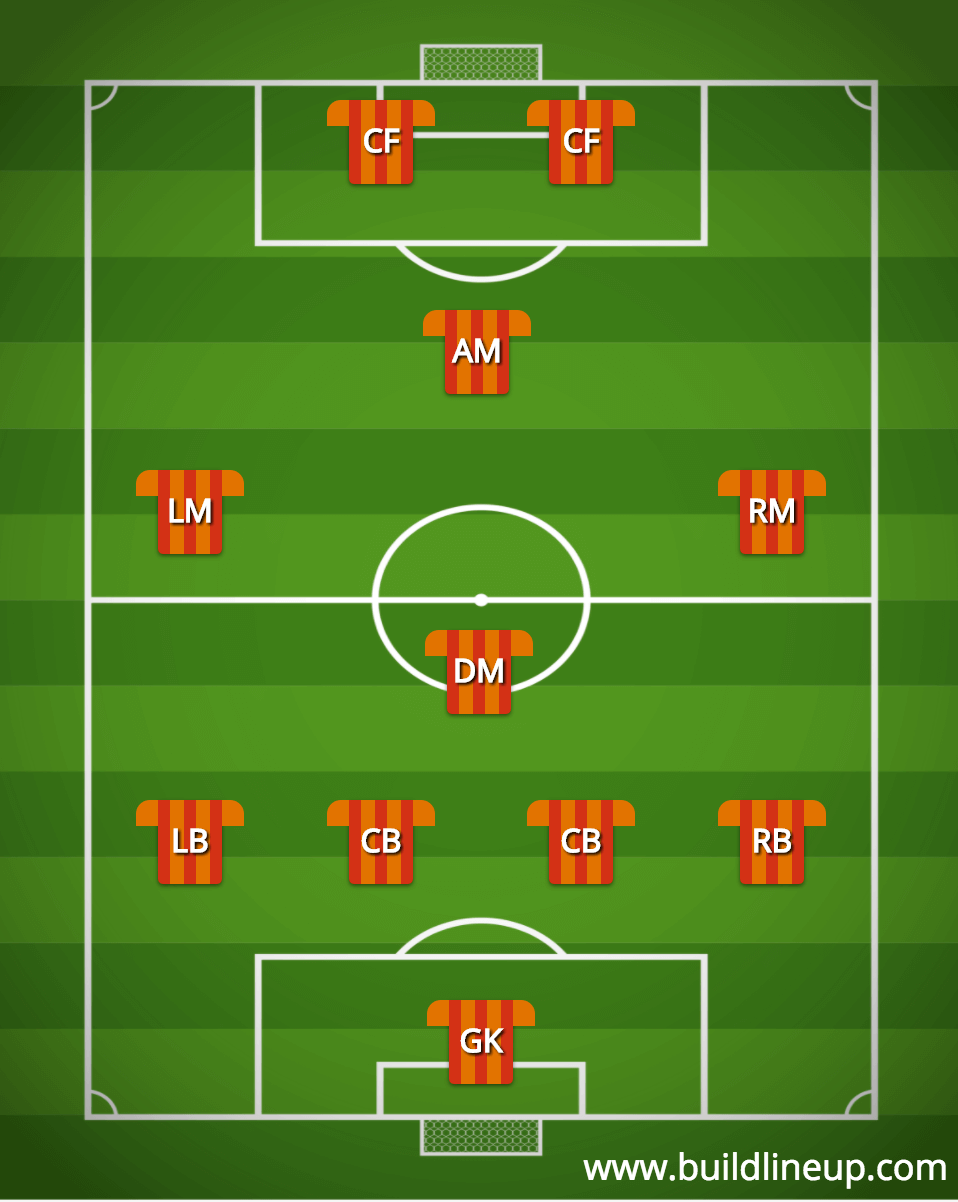Football Formations: 4 4 2 Diamond
The 4-4-2 Diamond, the closest relative of the standard 4-4-2, is a formation that sees specific use in modern football. Most recently used by Brendan Rodger’s 2014 Liverpool team to strike fear into other Premier League clubs, and seeing some use by Louis Van Gaal’s Netherland’s team during their unexpected journey to bronze glory at the 2014 World Cup, this 4-4-2 variation is one that makes for rather entertaining football when utilised properly.
A narrow formation, the Diamond forgoes the use of wingers or even wide midfielders, and opts for four central midfielders, a tactic that may yield results ranging from overwhelmingly oppressing to laughably ridiculous.

Before simulating the 4-4-4 Diamond with our team builder, it is important to understand some of the requirements for it to be productive.
Formation Requirements
- Attacking fullbacks: The 4-4-2 Diamond provides no natural width because of the lack of wingers or wide midfielders and as such, the fullbacks have the responsibility of pushing up on the overlap to exploit spaces in the wide areas.
- A disciplined destroyer: When on the attack, the Diamond requires the deepest lying midfielder to hold position, as a shield to the defence—a defence without the two fullbacks who have joined in the attack. This leads to a transition to a shape resembling the standard 3-5-2.
- Hardworking, flexible central midfielders: The greatest strength of the Diamond comes from its ability to remain flexible and efficient in the central midfield areas. The two central midfielders are required to be able to cover as much ground as possible while retaining shape and flexibility.
- A creative attacking midfielder: Unlike the standard 4-4-2 which ignores the possibility of an attacking midfielder — a number 10 without any significant defensive responsibilities, the Diamond utilises one, in an attempt to overload the central region and compensate for the lack of natural width. This midfielder is responsible for creating plays, as virtually all of the attack goes through him. A good example of such a player is Arsenal star, Mesut Ozil.
Strengths
- Defensive Shape: By having a dedicated defensive midfielder, the Diamond sacrifices some attacking potential to ensure defensive stability.This extra man, the destroyer, can easily step back into defence to act as the fifth defender if the team is under pressure. This leads to a transition in the form of a defensive 5-3-2.
- Control: By having four midfielders packed into the middle of the pitch, the Diamond gives an edge over most other formations by having an extra man. The four midfielders ensure that there is no space for the opposition to string together passes in the build-up, ultimately leaving them with one option — the long ball.
- Flair: Having an extra midfielder gives the team a special channel for creating attacks. When utilised properly, this can lead to attacking football with devastating effects. Case in point, the 2013/2014 Liverpool team scored a whopping 101 goals over the course of the season.
Weaknesses
- Lack of Width: The Diamond is a very narrow formation due to the lack of advanced wide players. This means that the flanks can only be used during attacks by either a drifting center forward or midfielder, or a fullback. The first option reduces the potency of the attack by a great margin, so fullbacks are the only viable option.
- Exposure to Counterattacks: When the fullbacks go on the overlap to compensate for a lack of wide attacking players, the backline is left exposed to a potential counterattack. This is slightly mitigated by the defensive midfielder who sits back, but even a 3-v-3 counterattacking situation can easily go bad for the defending team.
- Physical Strain: The Diamond requires extremely fit central midfielders to cover ground, and fullbacks who can bomb up and down the pitch with ease. This may put a strain on the players, resulting in a possible decrease in efficiency over the course of the game or season.
Variations
You can build the Diamond’s closest variant, the classic 4-4-2, with our formation creator.
When to Be Used
The Diamond is mostly used by teams that lack natural wide players, who choose to have most of their plays go through the middle rather than use a potentially unproductive wide man.